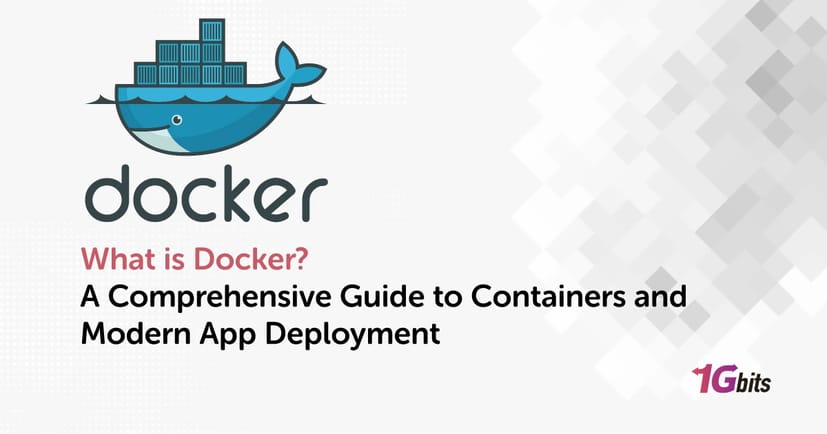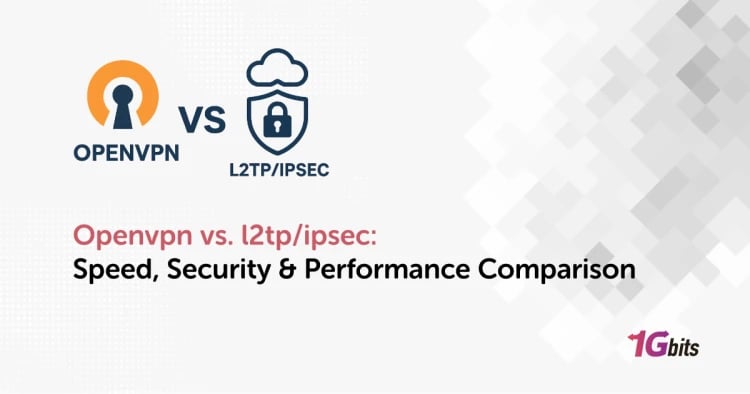In today’s world of software development, cloud computing, and DevOps, the question “What is Docker?” comes up more than ever. If you’re a developer, system administrator, or business owner who wants to modernize your infrastructure, learning what Docker is — and what Docker is used for — can transform how you build, ship, and run applications. In this article, we’ll explore what Docker is, what Docker is used for, how it works, and how you can get started with Docker.
What is Docker?
Docker is an open-source platform that makes it easier to build, test, deploy, and run applications using containers. Containers are lightweight, standalone executable packages that include everything needed to run your app — code, runtime, system tools, libraries, and settings.
When someone asks, “What is Docker?”, think of it as a tool that solves the classic “It works on my machine!” problem by ensuring your app runs the same everywhere. Docker ensures consistency, speed, and scalability by packaging applications and their environments into containers.
What is Docker Used For?
Common Use Cases of Docker:
-
Simplifying Deployment: Package your app once, run it anywhere.
-
CI/CD Pipelines: Automate testing and deployment workflows.
-
Microservices: Break down large monolithic apps into smaller, manageable services.
-
Scalability: Deploy multiple instances of containers to handle load.
-
Isolation: Run multiple apps on the same host without conflict.
-
Resource Efficiency: Containers share the host OS, using fewer resources than virtual machines.
Developers and businesses rely on Docker to speed up development, reduce bugs caused by environment differences, and deliver products faster.
How Does Docker Work?
If you’re asking, “What is Docker and how does it work?”, here’s the simple version: Docker uses OS-level virtualization. Containers share the host operating system’s kernel but run isolated processes. This makes containers extremely lightweight compared to virtual machines.
How Docker Works — A Breakdown:
-
Docker Engine: The runtime that builds and runs containers.
-
Docker Images: Templates used to create containers.
-
Docker Containers: Running instances created from images.
-
Docker Hub: A cloud-based registry to share images.
-
Docker CLI & API: Tools to interact with Docker.
-
Docker Compose: For multi-container applications.
-
Docker Swarm: For clustering and orchestration.
Unlike VMs, Docker containers boot up in seconds and require less overhead.
What is a Docker Container?
A Docker container is the core unit of Docker. It’s a lightweight, standalone, executable package that includes everything needed to run an application: code, runtime, system tools, libraries, and dependencies.
Think of a Docker container as a sandboxed environment — like a virtual machine, but much faster and more resource-efficient because containers share the host OS kernel.
Key Features of Docker Containers:
-
Portability: Run your containers anywhere — your laptop, a colleague’s Mac, a cloud server — and they’ll behave the same.
-
Isolation: Each container runs in its own isolated space. Apps don’t interfere with each other, and changes inside one container don’t affect others.
-
Immutability: Containers are built from images, which are read-only. When you need to update, you build a new image and redeploy — no messy config drift.
-
Scalability: Containers can be easily replicated across multiple nodes to handle traffic spikes or distribute workloads.
Real-World Example:
Imagine you have a Python app and its required libraries in one container, and a PostgreSQL database in another. They communicate over a Docker network but remain isolated from other apps on your server.
If you want a deep dive into “what is Docker?”, check our dedicated post: What Is a Docker Container.
What is a Docker Image?
Another essential piece is the Docker image. So, what is a Docker image? A Docker image is a read-only template with instructions for creating a container.
Images include:
-
The app code.
-
A base OS image (like Ubuntu).
-
Language runtimes.
-
Dependencies and tools.
Developers build images using a Dockerfile, then store them in Docker Hub or private registries. Containers are then spawned from these images.
Learn more in our guide: What is a Docker Image.
What is Docker Compose?
When your application needs multiple services — like a web server, database, and cache — you’ll want an easy way to manage them all together. That’s where Docker Compose comes in.
Docker Compose is an open-source tool that lets you define, configure, and run multi-container Docker applications using a simple YAML file called docker-compose.yml. Instead of manually starting each container and linking them, you describe all services, networks, and shared volumes in a single file, then spin everything up with one command: docker-compose up.
With Compose, your entire development environment lives as code. Need a WordPress site with a MySQL database? Or a Node.js API with a Redis cache? Compose handles service dependencies, shared environment variables, exposed ports, and more — all reproducibly.
Benefits of Docker Compose:
-
Multi-Container Orchestration: Easily manage projects that depend on several interconnected services.
-
Consistent Environments: Run identical setups for local development, staging, testing, and production.
-
Simple Configuration: One docker-compose.yml file describes everything — no long docker run commands to remember.
-
Streamlined Workflow: Start, stop, rebuild, or scale services with a single command.
-
Isolation: Each project has its own isolated network and volumes.
Example Use Case:
A full-stack application with a React frontend, Express backend, MongoDB database, and Nginx proxy — all running in separate containers, defined and networked automatically with Compose.
Explore how to set it up in our article: What is Docker Compose.
What is Docker Desktop?
If you’re on Windows or Mac, you’ll use Docker Desktop. But what is Docker Desktop?
Docker Desktop is an easy-to-install app that brings the power of Docker to your local machine. It bundles Docker Engine, Docker CLI, Docker Compose, Kubernetes, and more into a user-friendly GUI.
Why use Docker Desktop?
-
Simplifies local development.
-
Integrated Kubernetes cluster.
-
Automatic updates.
-
GUI for managing containers and images.
What is Docker Swarm?
A lot of people also ask “What is Docker Swarm?”
Docker Swarm is Docker’s native clustering and orchestration tool. It lets you manage a cluster of Docker nodes as a single virtual system. You can deploy services, manage scaling, and ensure high availability.
Want to set up your own cluster? Read: What is Docker Swarm.
What is Docker and Kubernetes?
People often ask, “What is Docker and Kubernetes?”
-
Docker handles containerization.
-
Kubernetes is an advanced open-source system for automating deployment, scaling, and management of containerized applications.
While Docker Swarm is good for smaller clusters, Kubernetes is the industry standard for large-scale container orchestration.
|
Feature |
Docker Swarm |
Kubernetes |
|
Ease of setup |
Simpler, quick to configure |
Steeper learning curve |
|
Scalability |
Good for small-medium workloads |
Best for enterprise-scale workloads |
|
Ecosystem |
Docker-native |
Large ecosystem, many plugins |
What is Docker and How to Install It?
If you’re new to Docker, you may wonder what is Docker and how to install it.
Here’s a quick summary:
-
Download Docker Desktop for Windows/Mac.
-
For Linux, install Docker Engine using your package manager.
-
Verify with
docker --version -
Pull an image:
docker pull nginx -
Run a container:
docker run -d -p 80:80 nginx
For a step-by-step guide, check our tutorial: How to Install Docker.
What is Docker Alternative?
While Docker is the market leader, you might ask, what is Docker alternative? Here are some:
-
Podman: Rootless containers with Docker compatibility.
-
LXC/LXD: Linux Containers, more VM-like.
-
containerd: Docker’s core runtime, usable standalone.
-
rkt (Rocket): CoreOS’s secure container runtime (now deprecated).
-
Kubernetes CRI-O: Lightweight runtime for Kubernetes.
What is Docker Example?
Let’s see “what is Docker?” example in real life.
Imagine you have a web app with:
-
A backend API.
-
A frontend UI.
-
A database.
Using Docker Compose, you define services for each in docker-compose.yml
version: "3.8"
services:
backend:
image: my-backend:latest
ports:
- "5000:5000"
frontend:
image: my-frontend:latest
ports:
- "3000:3000"
db:
image: postgres:13
environment:
POSTGRES_PASSWORD: example
Run docker-compose up — you now have a fully functioning environment!
Advantages of Using Docker
Docker’s popularity comes from solving real-world challenges developers and sysadmins face every day. Here’s why so many teams adopt Docker:
-
Portability: Build your app once and run it anywhere — on any machine with Docker installed, regardless of the underlying OS.
-
Efficiency: Containers are lightweight compared to virtual machines. They share the host kernel, start up in seconds, and consume fewer resources.
-
Consistency: Say goodbye to “it works on my machine” bugs. The app runs the same, no matter where it’s deployed.
-
Scalability: Easily spin up multiple replicas of containers to handle increased traffic. Tools like Docker Swarm or Kubernetes take this further.
-
CI/CD Friendly: Docker integrates seamlessly into modern pipelines. Automate builds, run tests in containers, and deploy identical images to production.
Real-World Example:
A SaaS company might build its backend services into Docker images, test them in isolated containers, and deploy the same images to cloud clusters, ensuring consistency at every stage.
When Not to Use Docker
While Docker is flexible, it’s not the right fit for every scenario.
When to reconsider Docker:
-
Full GUI Applications: Apps that need a complete desktop environment with a window manager are better suited to full virtual machines or bare metal.
-
Heavy Monolithic Apps: Large applications that don’t benefit from microservices or container isolation might introduce unnecessary overhead.
-
Strict Compliance Requirements: In some regulated industries, you may need stronger isolation than containers provide. Virtual Machines or bare-metal servers can offer stricter guarantees in such cases.
Bottom line: Always weigh the benefits of containers against the unique needs and constraints of your project.
Quick Comparison: Docker vs VM
|
Feature |
Docker Containers |
Virtual Machines |
|
Boot Time |
Seconds |
Minutes |
|
Size |
MBs |
GBs |
|
OS Overhead |
Shares host kernel |
Full guest OS |
|
Performance |
Near-native |
Some overhead |
|
Isolation Level |
Process-level |
Hardware-level |
How to Run Docker
Ready to start? Learn how to build and deploy containers with our guide: How to Run Docker.
Try Docker VPS Hosting
For scalable, high-performance hosting, check out our Docker VPS Hosting solutions and run your containers in the cloud.
Final Thoughts
Now you know “what is Docker?”, what is Docker used for, what is a Docker container, what is a Docker image, and how Docker can transform your workflows. Whether you’re building microservices, deploying scalable applications, or automating your CI/CD pipelines, Docker gives you the tools you need.
📢 Ready to level up? Dive deeper:







